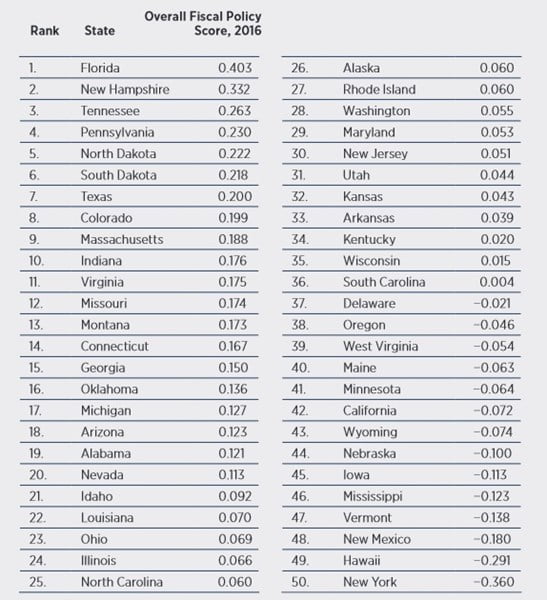Should high-tax states such as California and New York get a bailout?
Q1 2020 hedge fund letters, conferences and more
Morally Hazardous Bailouts
I explained last month why that would be a mistake, in large part because bailouts would reward states for irresponsible fiscal policy (similar to my argument that countries like Austria and the Netherlands shouldn’t be bullied into providing bailouts for Italy and Spain).
And I’ve shared two videos (here and here) for those who want more information about how bailouts encourage “moral hazard.” And this is true for banks (think TARP) as well as governments.
Today, though, I want to focus on some numbers that show what’s really causing fiscal problems in some states.
Adam Michel and David Ditch of the Heritage Foundation have generated some startling data on state government finances.
Instead of waiting on a handout from Washington, states should clear the way for a more robust economic recovery by addressing their unsustainable finances. States and local government spending has increased over the recent past… After adjusting for inflation and increases in population, state and local spending (in constant 2019 dollars) has grown from $5,596 per person in 2000 to $7,268 per person in 2019. That amounts to a 30% increase in the real cost of state and local government over just two decades, even without the thousands of dollars per person the federal government sends to states and localities through a wide variety of programs. …not all states spend equally. As of 2017, Florida, Georgia, and Arizona spent about $5,800 per person on state and local governments, but New York spent more than $11,700 per person.
The most important number is the above excerpt is that there’s been a 30 percent increase in per-capita state spending after adjusting for inflation.
That’s a very worrisome trend.
The Golden Rule for Fiscal Policy
But not all states are created equal. Or, to be more precise, they’re not all equally profligate. Here’s the chart that starkly illustrates why some states are in trouble.
At the risk of understatement, California and New York have not complied with the Golden Rule for fiscal policy.
Needless to say, there’s no justification for the notion that taxpayers in well-run states such as Texas and Florida should be coerced into providing bailouts for politicians in poorly run states.
And now we have a compelling visual that settles the argument.
P.S. Over the past several years, I’ve done multiple columns comparing Texas and California and also several columns comparing New York and Florida, all of which underscore that blue states have created their own problems by taxing too much and spending too much.
P.P.S. Thankfully, people can vote with their feet by moving from high-tax states to low-tax states. Let’s hope that Congress doesn’t enact a bailout so they’re forced to subsidize the states that drove them away.
This article was reprinted with permission from International Liberty.

Daniel J. Mitchell
Daniel J. Mitchell is a Washington-based economist who specializes in fiscal policy, particularly tax reform, international tax competition, and the economic burden of government spending. He also serves on the editorial board of the Cayman Financial Review.
This article was originally published on FEE.org. Read the original article.















